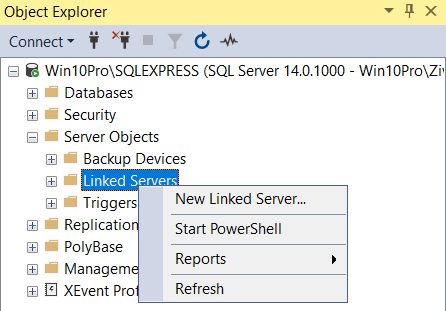
- #Microsoft® odbc driver 11 for sql server macos how to
- #Microsoft® odbc driver 11 for sql server macos install
- #Microsoft® odbc driver 11 for sql server macos drivers
- #Microsoft® odbc driver 11 for sql server macos license
Since Windows 8 is the operating system, there are two the ODBC Data Sources Administrator dialog boxes, one is for 32-bit ODBC Data Sources and the other is for 64-bit ODBC Data Sources. Or simpler, in the Windows search box, type the ODBC Data Sources word:Īnd from the search list, choose appropriate:Īs you may notice, there are two versions of the ODBC Data Sources Administrator dialog boxes: one is the ODBC Data Sources Administrator (32-bit) and another is the ODBC Data Sources Administrator (64-bit) version.

In the Control Panel under Administrative Tools, choose appropriate ODBC Data Sources: To open the ODBC Data Source Administrator dialog box, go to the Start menu under Windows Administrative Tools, choose ODBC Data Sources: The ODBC Data Source Administrator dialog box is a Windows component. The ODBC Data Source Administrator dialog box is used to create and manage ODBC data sources.
#Microsoft® odbc driver 11 for sql server macos drivers
Under the Drivers tab, check iif the ODBC Driver for SQL Server driver exists: Or open the ODBC Data Source Administrator dialog box: To confirm that the Microsoft ODBC drivers for SQL Server is installed, go to Control Panel and under the Program and Features find the Microsoft ODBC drivers for SQL Server: Click the Finish button to close the Microsoft ODBC drivers for SQL Server Setup window: In a few seconds, the installation of the Microsoft ODBC drivers for SQL Server finishes.
#Microsoft® odbc driver 11 for sql server macos install
On the Feature Selection window, select the Client Components item and click the Next button:Ĭlick the Install button on the Ready to Install the Program window to begin the installation of the Microsoft ODBC drivers for SQL Server:
#Microsoft® odbc driver 11 for sql server macos license
Under the License Agreement window read the license terms and if you agree, check the “ I accept the terms in the license agreement” radio button and click the Next button: msodbcsql.msi ) file and the welcome screen will appear:Ĭlick the Next button to proceed with installation. The process of installation of the Microsoft ODBC drivers for SQL Server is very simple and straightforward.

Let’s install the appropriate Microsoft ODBC drivers for SQL Server. x86\msodbcsql.msi on the Windows 64-bit version), the following warning message will appear: In case that the wrong version of the Microsoft ODBC drivers for SQL Server is trying to be installed (e.g. X86\msodbcsql.msi is for the Windows 32-bit version X64\msodbcsql.msi is for the Windows 64-bit version Depending on which Windows operating system version (32-bit or 64-bit) is used, there are two versions of the Microsoft ODBC drivers for SQL Server that can be installed: Installing and configuring the Microsoft ODBC drivers for SQL Serverįrom this link, the Microsoft ODBC drivers for SQL Server can be downloaded and installed. After that, it retrieves results from the ODBC driver and formats those into OLE DB specific structures which the consumer has access to them. The provider transforms incoming OLE DB calls into ODBC calls, and transfers them on to the specified ODBC driver. MSDASQL allows OLE DB consumer applications to use ODBC drivers to connect to a data source. The diagram below explains the flow of connecting to a SQL Server database using the MSDASQL provider and a SQL Server ODBC driver.
#Microsoft® odbc driver 11 for sql server macos how to
In this article, we will explain how to install the appropriate ODBC drivers for SQL Server, how to configure ODBC to connect to a SQL Server instance and how to create and configure a Linked Server using the ODBC driver and the MSDASQL provider to query tables on a SQL Server instance. ODBC is designed for relational data stores.

Microsoft Open Database Connectivity ( ODBC) is an application programming interface ( API) designed to access data from a different of database management systems ( DBMS).


 0 kommentar(er)
0 kommentar(er)
